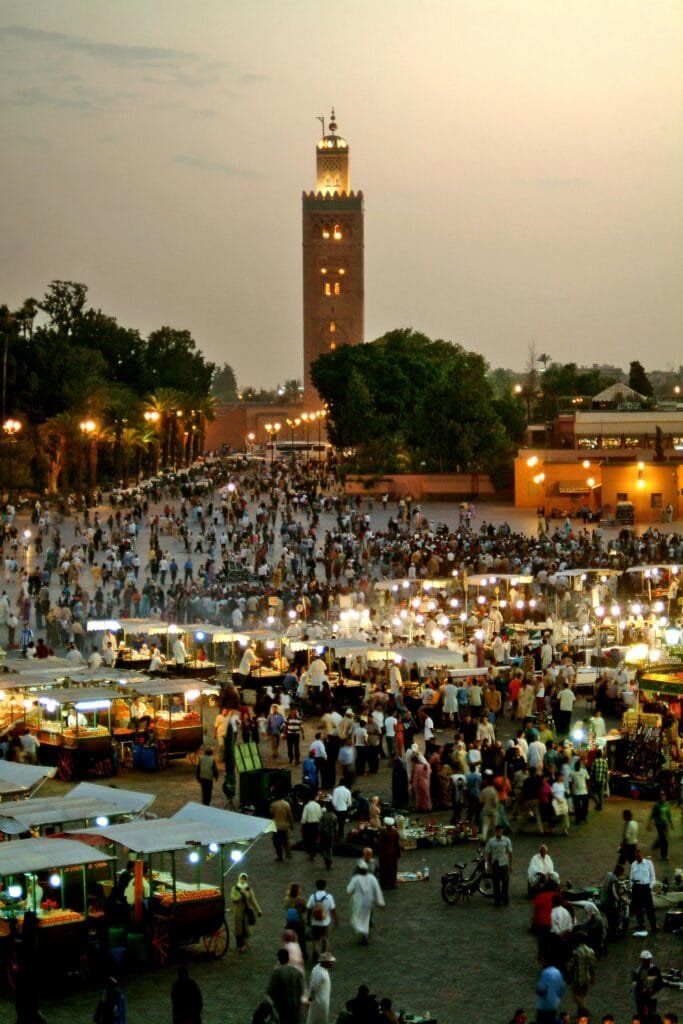Discover the Magic of Morocco: Africa’s Gateway to a World of Wonders!
Imagine traveling to a place where vibrant modernity coexists with ancient traditions, where the golden hues of the Sahara desert dance with the Atlantic Ocean’s shimmering blue, and where busy souks whisper stories of a thousand and one nights. These are not merely fantasies; Morocco, the crown jewel of Africa and its undeniable top tourist destination, is where you can experience these realities!
Your senses will be overwhelmed by a symphony of hues, scents, and sounds as soon as you arrive. Be ready for an amazing journey where exploring a rich tapestry of culture, history, and scenic beauty that genuinely enthralls the soul is the true purpose of travel, rather than merely seeing places. Morocco offers visitors lifelong memories and is more than just a country; it’s a sensation, an adventure, and an invitation to discover the vibrant heart of Africa. Are you prepared to open the doors to an inspiring and magical world?
- Rich History and Ancient Heritage
Morocco is more than just a place to visit; it’s a living museum, an enthralling tapestry made with remnants of ancient civilizations, dynasties, and empires. An immersive experience that takes you through millennia of enthralling tales, architectural wonders, and enduring cultural legacies, Morocco’s past is ideal for both history buffs and inquisitive tourists. Get ready to be mesmerized by a place where each archway beckons you further into its rich historical core, and each cobblestone carries stories of past times.
The Imperial Cities: Where Dynasties Left Their Mark
Fez, Marrakech, Meknes, and Rabat are the magnificent Imperial Cities that are at the heart of Morocco’s historical charm. As the seat of strong dynasties, each left an enduring architectural and cultural legacy that shapes its distinct identity to this day.
- Fez (Fes): Known as the “spiritual and cultural capital” of Morocco, Fez is home to the UNESCO World Heritage site Fes el-Bali, a maze-like medina, and the oldest continuously running university in the world, Al-Attarine Madrasa. Discover historic tanneries, meander through its winding, narrow lanes, and be in awe of the elaborate mosaics and cedar wood carvings that adorn its centuries-old madrasas, such as the magnificent Bou Inania Madrasa. Fez is a vibrant example of Islamic craftsmanship and scholarship, and it is a sensory overload in the best way.
- Marrakech: The “Red City” is a thriving city where modern life coexists with history. Every day, the UNESCO-designated iconic Djemaa el-Fna square comes alive with food vendors, musicians, and storytellers. Discover the hidden beauty of the Saadian Tombs, a 16th-century royal necropolis, and the lavish Bahia Palace, a masterpiece of Moroccan-Andalusian architecture from the 19th century. An example of Almohad architectural genius, the imposing Koutoubia Mosque with its magnificent minaret serves as an inspiration for buildings well beyond Morocco’s boundaries.
- Meknes: Frequently less congested than Marrakech and Fez, Meknes provides a more personal imperial experience. Built by Sultan Moulay Ismail in the 17th century, this capital has enormous granaries, magnificent stables, and gates as enormous as Bab Mansour. With its carefully conserved historical sites that narrate tales of ambition and power, Meknes offers a calm yet profound window into Morocco’s royal past.
- Rabat: Rabat, the contemporary capital of Morocco, skillfully combines a sense of modern elegance with its ancient heritage. Discover the enchanting blue and white houses and Andalusian Gardens of the historic Kasbah of the Udayas, which is perched dramatically over the Atlantic. See the famous Hassan Tower, a massive minaret from an incomplete mosque that stands proudly next to Mohammed V’s Mausoleum, a magnificent example of contemporary Moroccan architecture and a nod to the royal family.

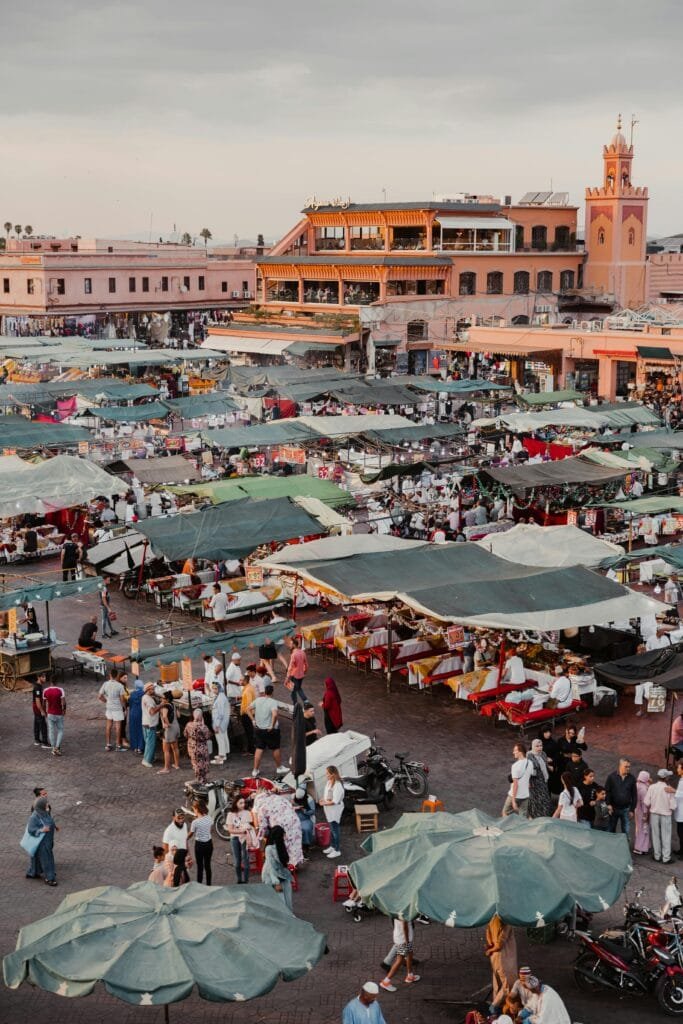
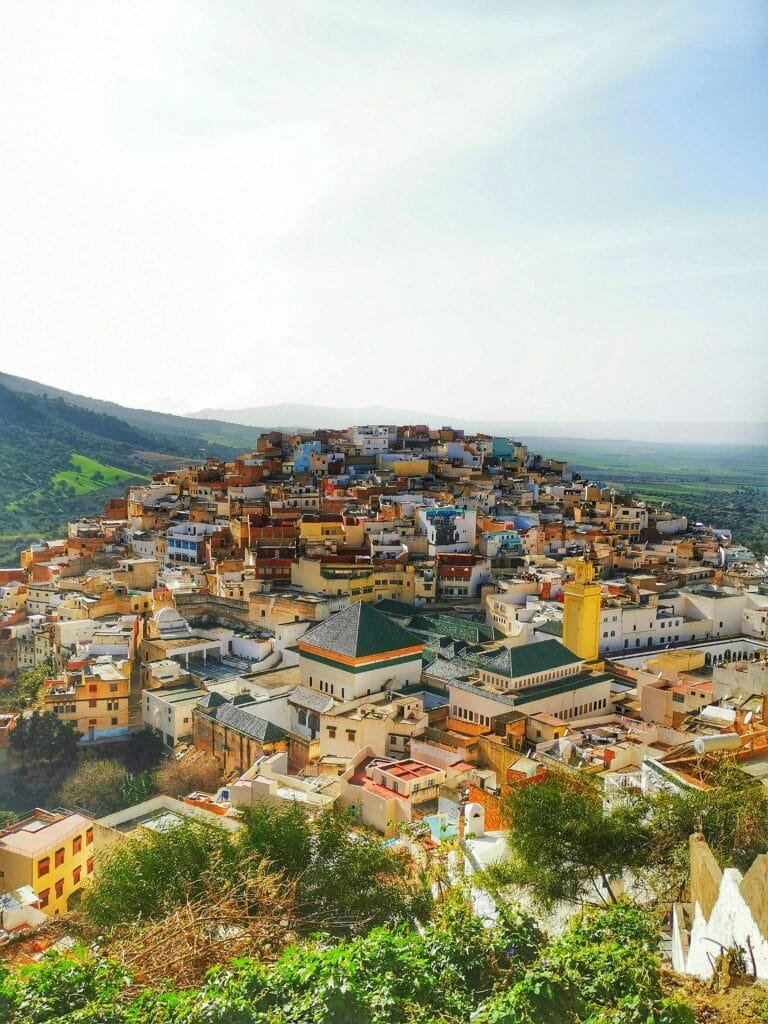

Ancient Civilizations’ Reverberations: Roman Ruins and Beyond
The history of Morocco goes back to ancient times and goes well beyond its imperial dynasties. Throughout the landscape, there is evidence of even older civilizations:
- Volubilis: The most striking Roman ruin in Morocco, Volubilis is a UNESCO World Heritage site. This historic city, tucked away amid undulating hills, provides an amazing window into Roman Africa. Explore its well-kept streets, take in the elaborate mosaic floors that are still vividly colored, and imagine what life would be like in this prosperous Roman outpost. A magnificent gateway to a bygone era is the Arch of Caracalla.
- Sala Colonia (Chellah): The Chellah Necropolis, Rabat, is an intriguing location that combines Islamic fortifications from the Middle Ages with Roman ruins. Wander around the ruins of a Roman city that was later converted into a Muslim fortified cemetery, complete with a lovely garden and stork nesting sites. It serves as a moving reminder of the many historical facets that have shaped this region.
Grandeur in Architecture: An Tradition of Islamic Artistry
Centuries of Islamic artistic traditions have greatly influenced Moroccan architecture, which is a stunning blend of Arab, Berber, and Andalusian influences. Every detail, from the elaborate wood carvings and stucco work to the intricate geometric patterns of Zellige tilework, reveals an unmatched level of craftsmanship.
- Madrasas: The Ben Youssef Madrasa in Marrakech and the Bou Inania and Al-Attarine Madrasas in Fez are examples of historic Islamic schools that are architectural masterpieces. They provide a tranquil haven and a deep understanding of the intellectual and spiritual core of Morocco through their tranquil courtyards, intricate prayer halls, and student residences, which display the pinnacle of Moroccan Islamic art.
- Mosques and Palaces: Although many mosques are only open to Muslims, their exterior magnificence and the distinctive Moroccan square minarets are breathtaking. The Bahia Palace and El Badi Palace in Marrakech are prime examples of the opulence and elaborate architecture of royal homes, while the Hassan II Mosque in Casablanca, with its towering minaret, is a contemporary wonder.
Morocco’s rich history and ancient heritage are not just relics of the past; they are living, breathing testaments to a vibrant cultural legacy that continues to shape the country today. Every visit is an invitation to step back in time and connect with the soul of a nation forged by diverse influences and enduring traditions.
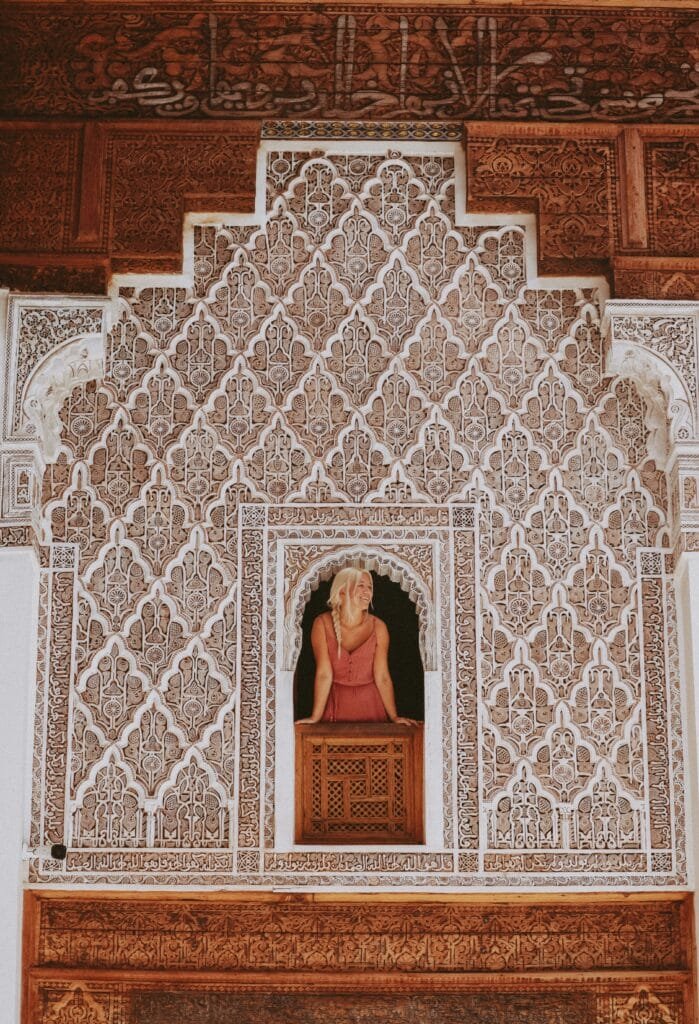

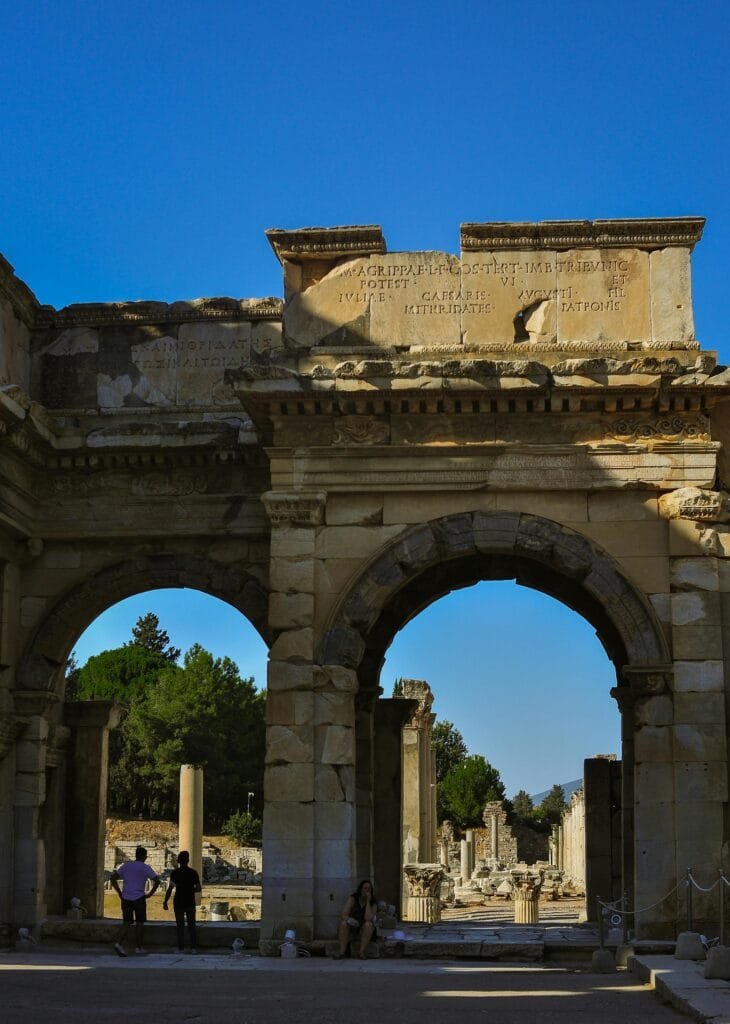


- Unique Cultural and Linguistic Diversity
Morocco provides an equally captivating journey into a genuinely unique cultural and linguistic landscape beyond its historic cities and stunning landscapes. Centuries of interaction have created a society rich in a variety of traditions, customs, and expressive languages in this fascinating crucible of North Africa. The rich fusion of human tales that characterize Morocco’s very essence is what makes a trip there more than simply taking in the sights.
A Mixing Pot of African, Jewish, Arab, and Amazigh Influences
Morocco’s cultural identity is a stunning mosaic that has been influenced by a number of strong forces:
- Amazigh (Berber) Heritage: The Amazigh, also known as the Berbers, are the indigenous people of North Africa with thousands of years of Moroccan ancestry. The foundation of Moroccan culture is made up of their ancient language, unique customs, lively music (such as the mesmerizing rhythms of Ahidous), and elaborate artisanal crafts (from exquisite silver jewelry to handwoven carpets). The breathtaking kasbah architecture, the friendly mountain villages, and the High Atlas’s unwavering spirit of perseverance are all examples of their presence.
- Arabic-Islamic Traditions: Morocco was significantly impacted by the introduction of Islam and Arab cultures in the seventh century. Arabic, Islamic art and architecture, such as the elaborate zellige tiles, opulent mosques, and tranquil riads, as well as a long history of academic pursuits and religious fervor, were all brought with this. A potent reminder of this lasting influence is the call to prayer that reverberates through historic medinas.
- Jewish Legacy: For many centuries, Morocco had a flourishing Jewish community that lived in harmony with one another and made substantial contributions to the country’s economy and culture. In addition to synagogues and cemeteries throughout the nation, their heritage is painstakingly preserved in historic “Mellahs” (Jewish quarters) in cities like Fez and Marrakech, even though many have since emigrated. By actively supporting the restoration and preservation of these locations, King Mohammed VI has demonstrated Morocco’s longstanding dedication to religious tolerance and the acknowledgement of its varied heritage. Examining this element provides a moving window into a distinct period of Moroccan history.
- African Echoes: Positioned as a gateway to sub-Saharan Africa, Morocco has long been a nexus of trans-Saharan trade routes. This historical connection has infused Moroccan culture with distinct African influences, particularly evident in the mesmerizing rhythms of Gnawa music, a spiritual and healing art form brought to Morocco by descendants of West African slaves. Its hypnotic melodies and vibrant ceremonies offer a deep connection to the continent’s heart.
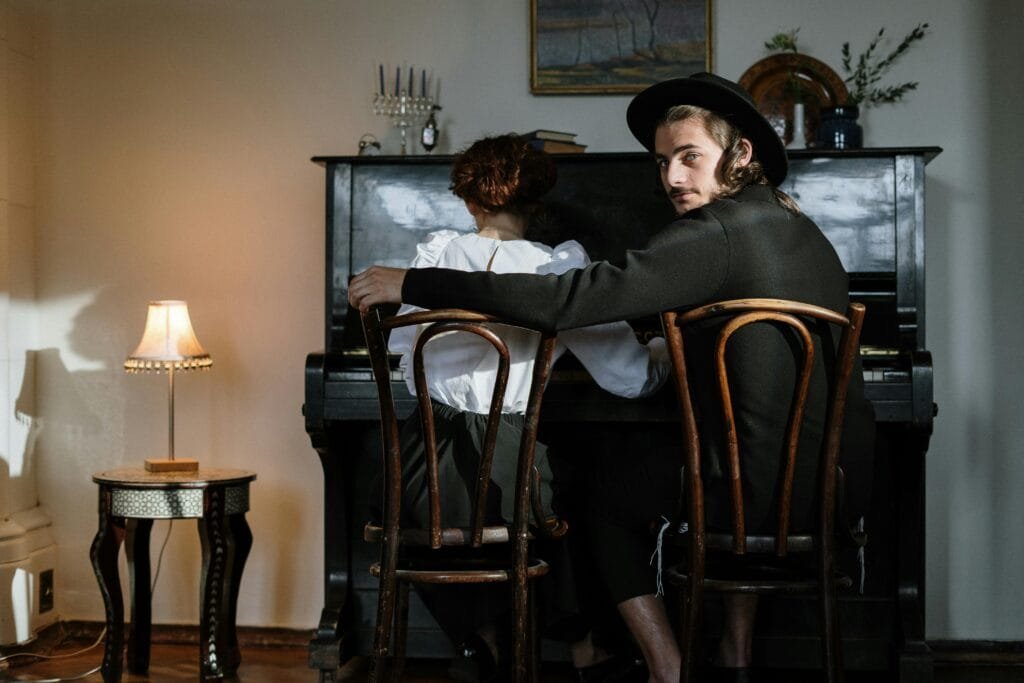

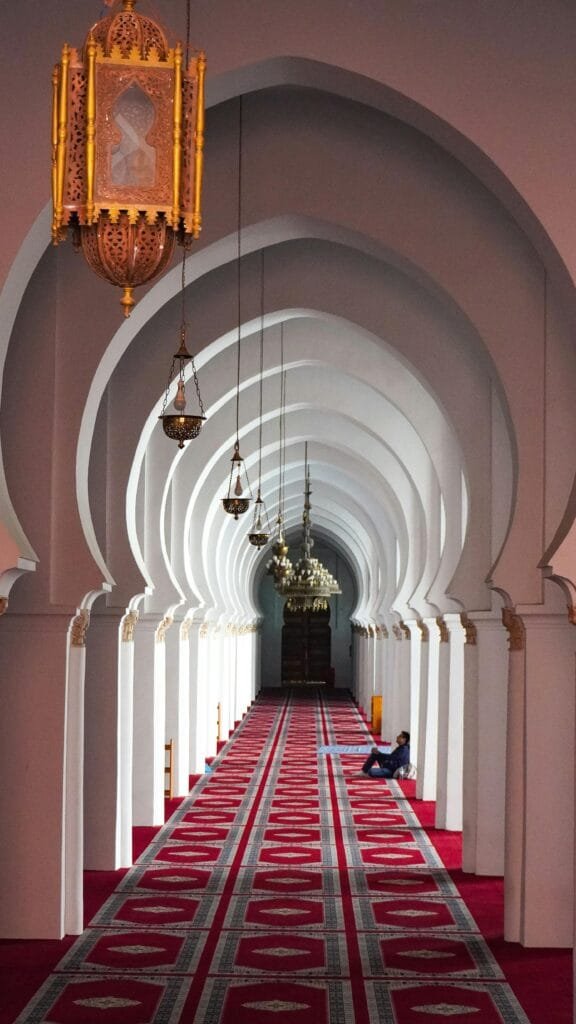
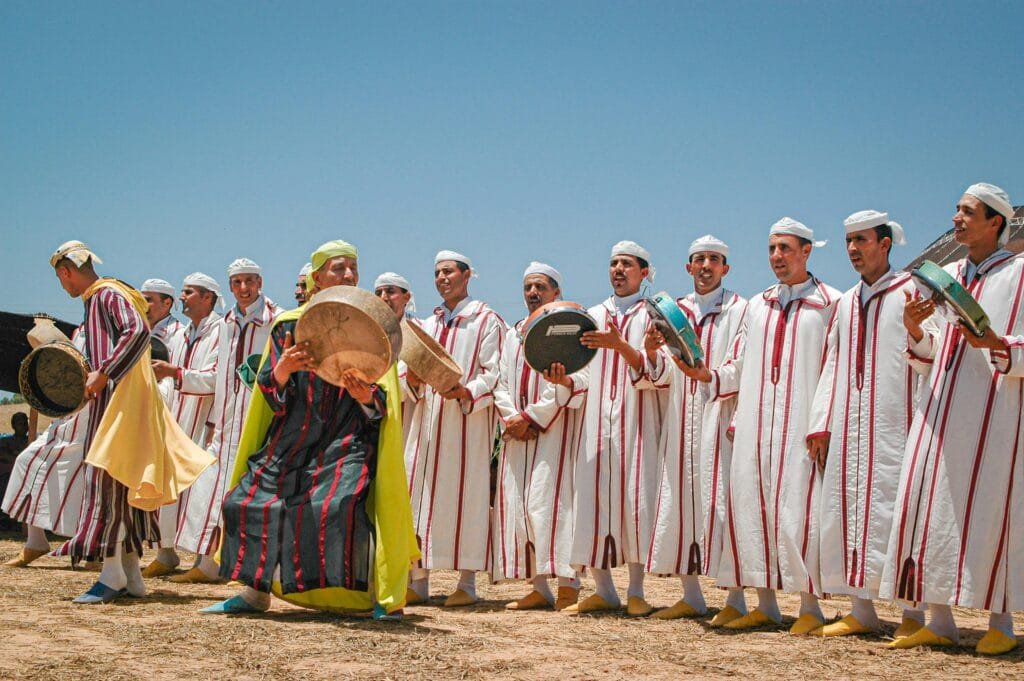
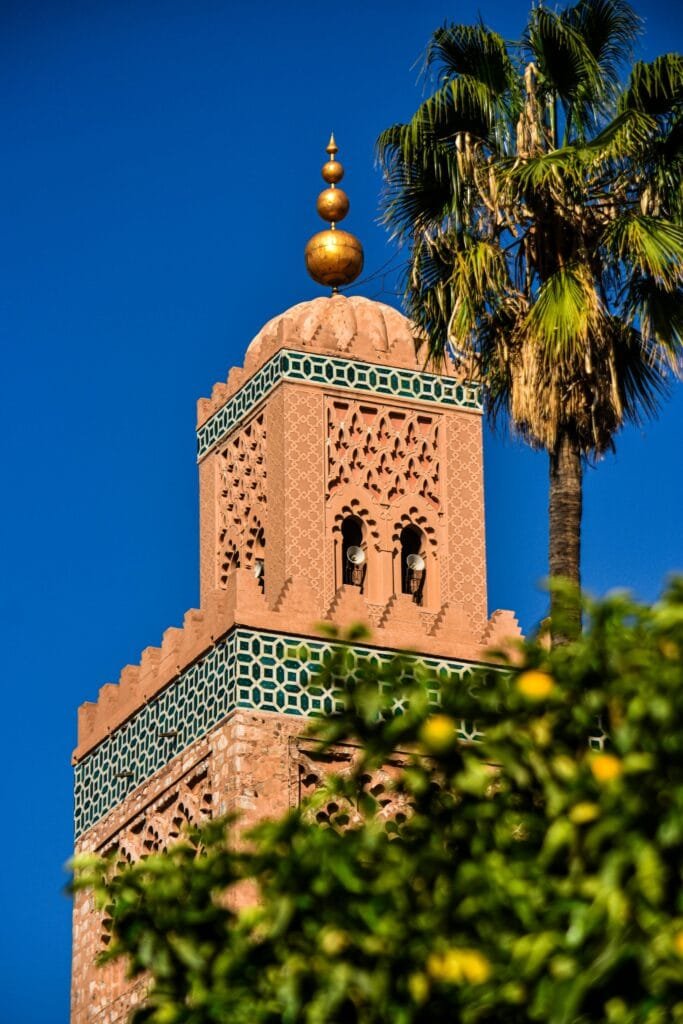
A Symphony of Languages: Arabic, Amazigh, French, and Spanish
Morocco’s dynamic linguistic landscape reflects this rich cultural tapestry. Although Standard Moroccan Berber (Tamazight) and Modern Standard Arabic are the official languages, there is a lively interplay of multiple tongues in Moroccan daily life:
- Moroccan Arabic (Darija): This is the widely spoken vernacular, a unique and lively dialect that blends Arabic with influences from Amazigh, French, and even Spanish. While different from other Arabic dialects, learning a few phrases of Darija will greatly enhance your interactions and open doors to genuine connections with locals.
- Amazigh Languages: Spoken in various dialects across the country – including Tashelhit (in the south), Central Atlas Tamazight (in the central Atlas mountains), and Tarifit (in the Rif region) – Amazigh languages are a fundamental part of Moroccan identity. Their official recognition underscores the country’s commitment to preserving its indigenous heritage.
- French: A notable holdover from the protectorate era, French is still widely used, particularly in business, education, and urban areas. It will be extremely helpful to you when navigating cities, interacting with hotel staff, and deciphering official signage.
- Spanish: Because of Morocco’s historical ties to Spain, Spanish is also widely understood and spoken in the country’s northern regions, especially in the areas surrounding cities like Tangier and Tetouan.
Visitors find this environment to be immensely welcoming and endlessly fascinating due to the distinctive blending of languages and cultures. There, diverse communities flourish, long-standing customs are respected, and every discussion presents an opportunity to discover more about Morocco’s fascinating identity.
- Breathtaking Natural Landscapes
Welcome to Morocco, a land where vibrant culture meets breathtaking natural wonders, offering an unparalleled travel experience for every discerning adventurer. From snow-capped peaks to golden sand dunes, and from sun-kissed beaches to serene green oases, Morocco’s diverse landscape is a masterpiece waiting to be explored. Coupled with a climate that caters to all preferences, your Moroccan journey promises to be nothing short of extraordinary.
Discover the Diverse Landscape of Nature’s Grand Symphony
Get ready to be enthralled with Morocco’s breathtaking natural diversity:
- The Magnificent Atlas Mountains: An Ideal Hiking Destination and Winter Wonderland
Morocco’s untamed spine is the Atlas Mountains, which rise majestically across the nation and beckon you to go on life-changing adventures. Trek through historic Berber villages tucked away in charming valleys, see breathtaking gorges sculpted by the passage of time, and scale difficult summits like Toubkal, the highest peak in North Africa. For skiers and snowboarders, these mountains become a mystical playground in the winter, providing a distinctive viewpoint of Morocco. Enjoy the friendly hospitality of the local Amazigh people, who will share their rich traditions and delectable mint tea while hiking through fragrant cedar forests and finding hidden waterfalls.
- The Mystical Sahara Desert: A Journey into Infinite Horizons
Travel south to the breathtaking Sahara Desert, a region of golden dunes that stretches for miles. Time seems to stop here as you trek across the shifting sands on a camel, see breathtaking sunsets that cast fiery hues across the sky, and spend the night in a traditional Bedouin camp under a million stars. You can connect with the unadulterated beauty of nature and the timeless rhythm of nomadic life through the profound silence and vastness of the Sahara, which can be a truly transformative experience. Don’t pass up the opportunity to visit the Erg Chebbi dunes, which are well-known for their breathtaking beauty and ease of access, close to Merzouga.
- Sun-Drenched Coasts: Beaches for Every Mood
Morocco boasts an impressive coastline, embracing both the Atlantic Ocean and the Mediterranean Sea, offering a diverse array of beaches to suit every desire. From the wild, windswept shores of Essaouira, a haven for windsurfers and kitesurfers, to the lively, golden sands of Agadir, perfect for families and sun-seekers, there’s a beach for every type of relaxation. Explore charming coastal towns like Sidi Kaouki, known for its laid-back bohemian vibe, or discover the unique rock formations of Legzira Beach. Whether you seek thrilling water sports, serene sunbathing, or romantic strolls along the shore, Morocco’s beaches offer endless possibilities.
- Emerald Gems: The Tranquil Oases
The tranquil oases, lush retreats that provide a welcome respite from the desert surroundings, are scattered throughout the arid landscapes. Date palms, fruit trees, and traditional kasbahs (fortified villages) are all supported by these pockets of lush greenery, which are nourished by underground springs and serve as essential ecosystems. Explore the hidden splendor of the endless oases of the Draa Valley or stroll through the serene palm groves of Skoura. Exploring these peaceful havens offers a window into a sustainable lifestyle and a chance to recognize how resilient nature is in the face of adversity.
A Climate to Match Your Adventure: Year-Round Appeal
Morocco’s diverse geography blesses it with an equally diverse and generally mild climate, making it an ideal destination throughout the year.
- Spring (March to May) and Autumn (September to November): These seasons offer arguably the most pleasant weather across the country. Temperatures are comfortably warm, perfect for hiking in the mountains, exploring vibrant medinas, or enjoying desert excursions. The landscapes are at their most vibrant, with wildflowers blooming in the Atlas and the desert heat still manageable.
- Summer (June to August): While inland cities like Marrakech and Fez can experience high temperatures, the coastal regions remain delightfully moderate thanks to the Atlantic breezes. This is the perfect time for beach holidays, watersports, and exploring the cooler mountain valleys.
- Winter (December to February): The Atlas Mountains are transformed into a snowy wonderland, ideal for skiing and winter sports. Coastal areas remain mild and pleasant, offering a sunny escape from colder climates. Even the Sahara Desert, while experiencing cool nights, offers warm and inviting days for desert camping and exploration.
No matter when you choose to visit, Morocco’s natural beauty and accommodating climate ensure that your travel dreams can become a vibrant reality. So pack your bags and prepare to be enchanted by a land that truly has it all!
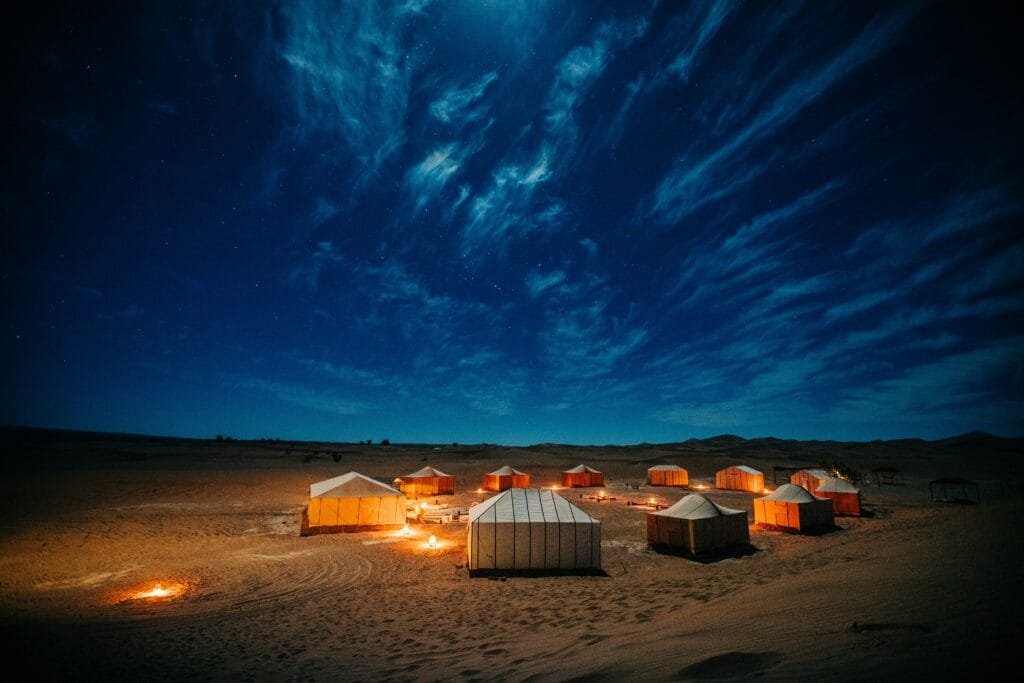
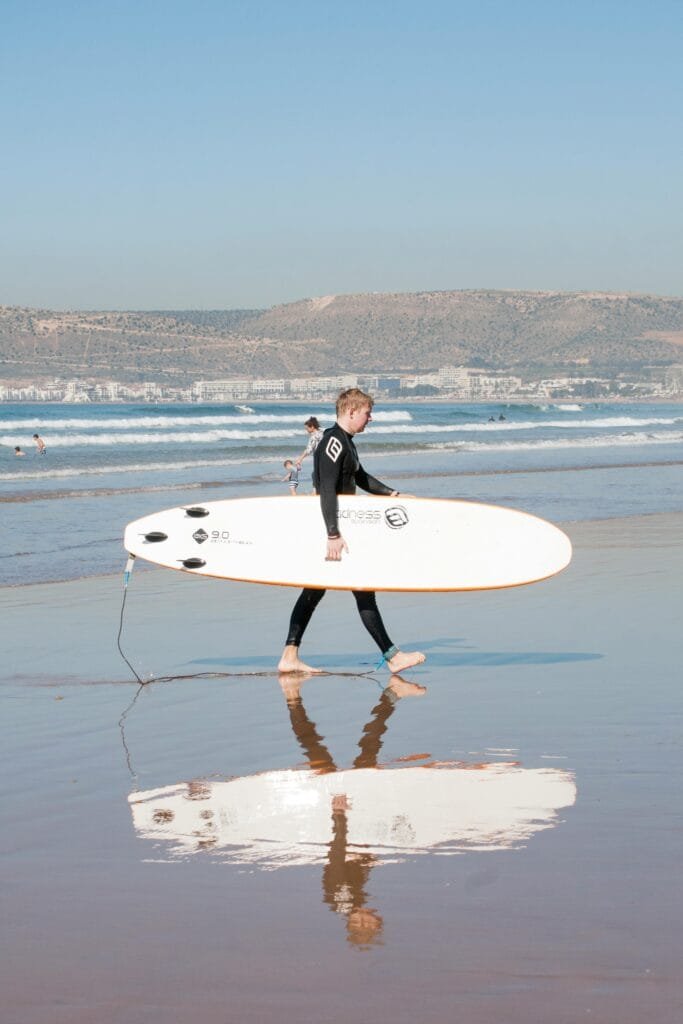
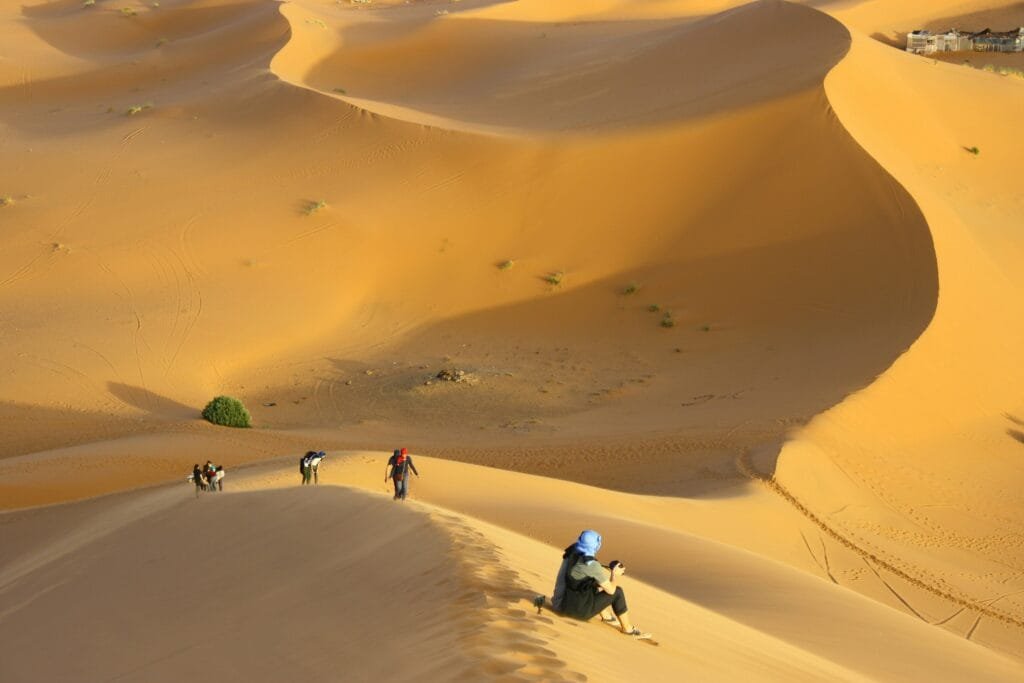
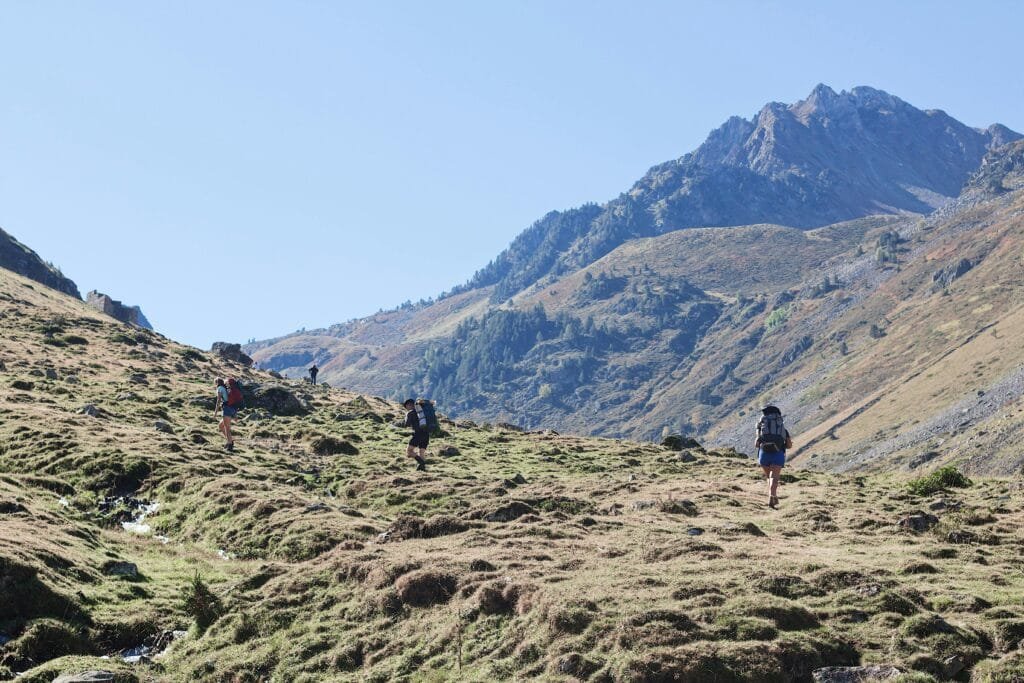
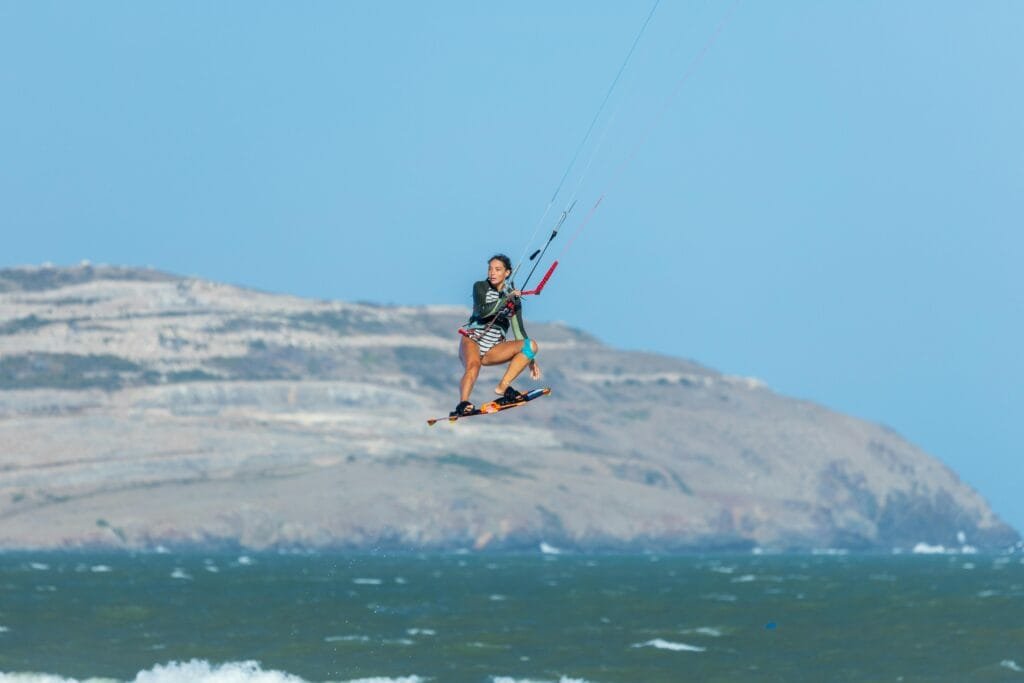
4. World Renowned Moroccan Cuisine
Beyond its stunning landscapes, Morocco is a sensory feast, especially for the palate. Its cuisine, celebrated globally for its complexity and vibrancy, is a testament to centuries of cultural exchange, blending Berber, Arab-Andalusian, Jewish, and even French influences. Every dish tells a story, seasoned with a symphony of aromatic spices and prepared with passion. Prepare for a culinary adventure that will tantalize your taste buds and leave an unforgettable impression.
A Symphony of Flavors: Must-Try Moroccan Delicacies
A Symphony of Flavors: Must-Try Moroccan Delicacies
- Tagine: The Iconic Slow-Cooked Masterpiece
The Tagine is more than just a dish; it’s a cornerstone of Moroccan culinary heritage and a symbol of hospitality. Named after the distinctive conical clay pot it’s cooked and served in, a tagine is a slow-cooked stew of tender meat (often lamb, chicken, or beef) or fish, combined with a colorful medley of fresh vegetables, aromatic spices, and sometimes even dried fruits like prunes or apricots. The unique design of the tagine pot allows for gentle, even cooking, infusing the ingredients with rich, deep flavors and keeping everything incredibly succulent. Each region and family has its own secret recipe, from the zesty chicken with preserved lemons and olives to the sweet and savory beef with prunes and almonds. Dip in with warm, crusty Moroccan bread (khobz) to savor every delicious drop of the sauce.
- Couscous: The National Dish and a Communal DelightCouscous is Morocco’s national dish, a staple deeply embedded in daily life and celebratory traditions, especially on Fridays after midday prayers when families gather to share this beloved meal. These tiny, fluffy grains of semolina are painstakingly steamed to perfection, creating a light and airy base. It’s typically served with a hearty stew of tender meat (lamb, chicken, or beef) and a vibrant assortment of vegetables, all bathed in a flavorful broth. The communal nature of eating couscous from a large platter, often by hand, fosters a sense of togetherness and warmth, making it a truly immersive cultural experience. You might also encounter sweet variations, topped with caramelized onions and raisins (tfaya).
- Mint Tea: The Heart of Moroccan Hospitality
No visit to Morocco is complete without indulging in the famous Moroccan Mint Tea, often affectionately dubbed “Berber whiskey.” This sweet, refreshing concoction of green tea, fresh spearmint leaves, and a generous amount of sugar is more than just a beverage; it’s a profound symbol of hospitality, friendship, and tradition. You’ll be offered it everywhere – in homes, shops, and restaurants – often accompanied by a charming ritual of pouring from a height into small, ornate glasses to create a frothy “crown.” Accepting the first glass is a gesture of respect, and you’ll quickly discover why this sweet, invigorating drink is so cherished.
- Traditional Sweets: A Sweet Ending to Every Meal Moroccan cuisine offers a delightful array of traditional sweets that are perfect for ending a meal or enjoying with mint tea. These confections often feature local ingredients like almonds, honey, dates, and orange blossom water. Keep an eye out for:
- Cornes de Gazelle (Gazelle Horns): Delicate, crescent-shaped pastries filled with a rich almond paste and often scented with orange flower water.
- Chebakia: Flower-shaped, deep-fried dough intricately woven, then dipped in honey and sprinkled with sesame seeds – especially popular during Ramadan.
- Fekkas: Crunchy biscotti-like cookies, often with almonds or anise, perfect for dipping in your mint tea.
- Ghriba: Soft, crumbly cookies, typically made with almonds or semolina, and often adorned with a crackled top
A Flavorful and Unforgettable Culinary Experience
Moroccan dining is about more than just the food; it’s a multisensory journey. The vibrant colors of spices piled high in the souks, the tantalizing aromas wafting from bubbling tagines, the warmth of communal dining, and the genuine hospitality that accompanies every meal create an experience that transcends mere sustenance. From bustling street food stalls offering savory brochettes (skewers) and maakouda (potato fritters) to elegant riad dining rooms serving exquisite pastilla (a savory-sweet pastry pie), Morocco promises a culinary adventure unlike any other.
So, loosen your belt, open your mind, and allow your taste buds to be your guide. Embrace the flavors, the traditions, and the warmth of Moroccan cuisine – it’s a truly unforgettable part of your journey!





5. Warm Hospitality and Generosity
Welcome to Morocco: Where Hospitality Transcends Words and Touches Hearts
In addition to its stunning scenery and extensive history, Morocco offers you a singular human experience based on authentic Moroccan hospitality, all while surrounded by historic medinas, charming palm oases, and golden desert dunes. Every visitor is treated as a valued member of the family here, not just a passing acquaintance, and they are all welcome to take in the rich tapestry of unmatched warmth and generosity.
Guests as Family: An Experience Beyond Expectation
In Morocco, hospitality extends far beyond merely providing a place to stay or serving food. It’s a philosophy deeply embedded in our cultural values, where a guest is considered a gift from heaven. You’ll notice it from the moment you arrive: a warm smile, a sincere invitation to share mint tea, and a table laden with delicious dishes prepared with love. Moroccan homes open their doors and hearts, and you become part of their daily rhythm, sharing stories and laughter, and experiencing a real way of life far from the hustle and bustle of modern times.
Imagine yourself sitting in the courtyard of a traditional riad, the fragrant steam of mint tea rising as your host recounts tales of the city’s history or family customs. You’ll find yourself engrossed in sincere and deep conversations, sometimes transcending language barriers through the language of eyes and smiles. These spontaneous moments are what truly etch themselves into your memory, making your trip to Morocco an unforgettable experience that goes beyond simply seeing tourist attractions.
An Authentic Human Experience Rooted in Moroccan Values
Moroccan hospitality isn’t just learned behavior; it’s a profound reflection of the Islamic, Arab, and Amazigh values that shape Moroccan identity. Principles like “Baraka” (blessing), “Joud” (generosity), and “Ma’rouf” (good deeds) guide Moroccans’ interactions with each other and with their guests. This means you’ll feel comfortable and safe, as if you’re in your own home, surrounded by care and attention.
Whether you’re strolling through the bustling souks of Marrakech, exploring the historic kasbahs of Ouarzazate, or spending a night under the stars in the desert, you’ll find yourself surrounded by simple, kind people who strive to make your stay enjoyable and full of beautiful memories. Don’t hesitate to accept invitations for a meal in a family home, participate in tea rituals, or even help prepare a traditional dish. These are the moments that reveal the essence of the Moroccan spirit and leave an indelible impression on you.
Why Travelers Choose Morocco
If you’re looking for a travel destination that offers more than just pretty pictures for social media, Morocco is your ideal choice. Here, you’ll find:
- Unparalleled Hospitality: A personal, intimate experience that makes you feel like part of the family.
- Rich & Authentic Culture: Immerse yourself in centuries-old traditions and customs.
- Stunning Natural Diversity: From golden beaches to towering mountains and vast deserts.
- Unforgettable Adventures: From camel treks to exploring ancient cities.
- Delicious Cuisine: Savor dishes rich in flavor and authenticity.
Come to Morocco, and let the magic of Moroccan hospitality captivate your heart. Discover a place where sincere smiles and welcoming hands are never forgotten, a place where tourist attractions transcend mere sites to become gateways to deep human experiences and lifelong memories. Morocco awaits you, ready to welcome you as a treasured member of its large family.

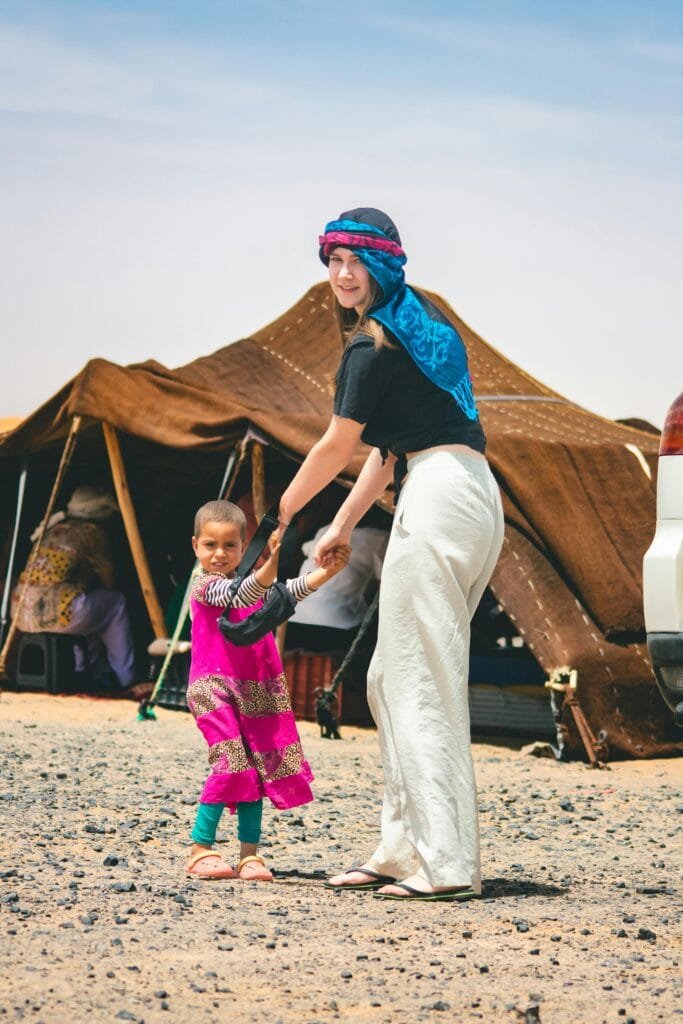


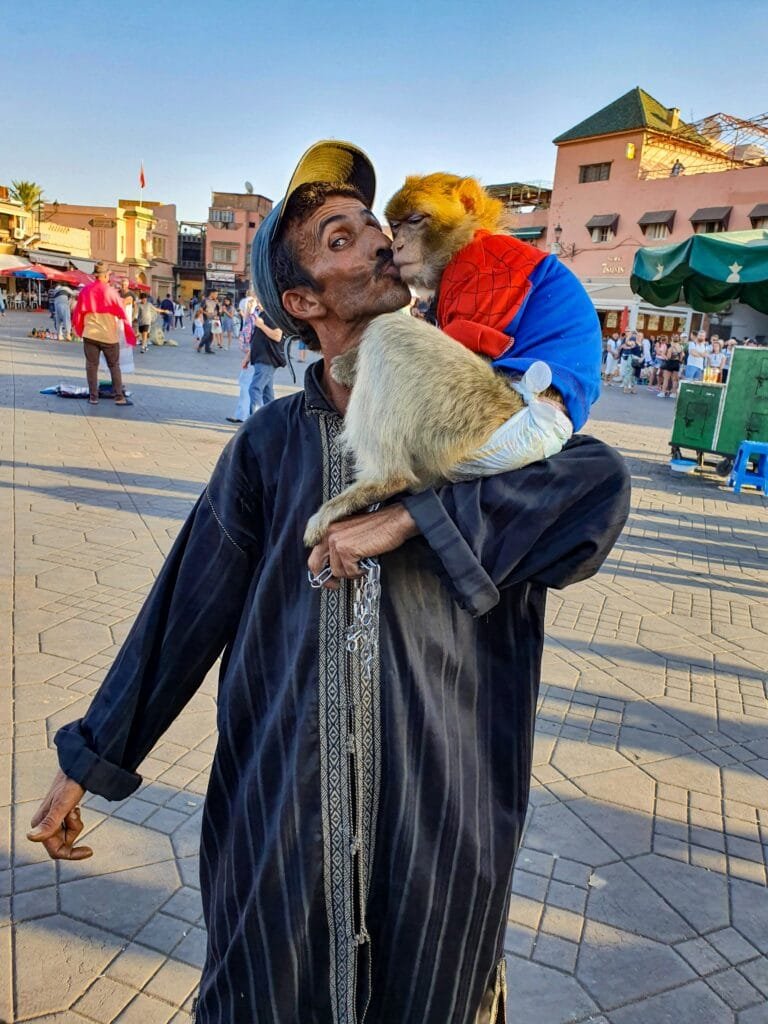
6. Variety of Tourist Experiences
Morocco is a land of captivating contrasts, where ancient traditions meet vibrant modernity, and breathtaking landscapes offer a playground for every type of traveler. Beyond its renowned hospitality, this North African gem boasts an unparalleled variety of tourist experiences, ensuring that every visit is tailor-made for adventure, cultural immersion, profound relaxation, or spiritual contemplation.
Adventure, Culture, Relaxation, and Spiritual Retreats: Your Journey, Your Way
Whether you crave the thrill of the unknown, the richness of cultural discovery, serene moments of tranquility, or a deeper spiritual connection, Morocco delivers.
For the Adventurer:
Morocco’s diverse topography is a dream come true for adrenaline junkies.
- Desert Expeditions: Embark on an unforgettable camel trek across the golden dunes of the Sahara Desert, witnessing mesmerizing sunrises and sunsets, and sleeping under a blanket of a million stars in a traditional Bedouin camp. For a faster pace, quad biking or 4×4 adventures through the desert are exhilarating options.
- Mountain Treks: The majestic High Atlas Mountains offer incredible hiking and trekking opportunities. Ascend North Africa’s highest peak, Mount Toubkal, or explore picturesque Berber villages nestled in verdant valleys. Rock climbing in the Todra Gorges provides a thrilling challenge for climbers of all levels.
- Coastal Thrills: Morocco’s Atlantic coast, particularly areas like Taghazout and Essaouira, is a paradise for water sports enthusiasts. Ride the waves while surfing or kitesurfing, or even embark on a whale-watching excursion.
For the Culture Enthusiast:
Immerse yourself in Morocco’s vibrant heritage, a tapestry woven from Amazigh, Arab, and Islamic influences.
- Ancient Medinas: Lose yourself in the labyrinthine alleys of Fes and Marrakech’s ancient medinas, UNESCO World Heritage sites that are living museums of history and craftsmanship. Witness traditional artisans at work, from leather tanners to weavers.
- Cooking Classes: Delve into the secrets of Moroccan cuisine with a hands-on cooking class, learning to prepare iconic dishes like tagine and couscous, and mastering the art of the traditional mint tea ceremony.
- Berber Village Visits: Journey to the heart of the Atlas Mountains to visit authentic Berber villages, gaining insights into their timeless traditions, music, and way of life.
For Relaxation and Wellness:
Morocco offers sanctuaries of peace and rejuvenation, perfect for unwinding and pampering your mind and body.
- Traditional Hammams: Indulge in the ancient ritual of a Moroccan hammam. This communal steam bath, often followed by a vigorous scrub with black soap and a soothing argan oil massage, is a deeply cleansing and therapeutic experience that leaves you feeling refreshed and revitalized.
- Luxury Riads: Stay in a beautifully restored riad, a traditional Moroccan house with an inner courtyard. These tranquil havens often feature serene gardens, refreshing pools, and exquisite architecture, providing a perfect escape from the bustling city.
- Yoga and Wellness Retreats: Many retreats across Morocco combine yoga, mindfulness, and healthy eating with cultural immersion, offering a holistic approach to wellbeing amidst breathtaking natural settings, from desert oases to mountain valleys.
For Spiritual Retreats:
Morocco’s spiritual heritage offers a unique dimension for those seeking introspection and connection.
- Sacred Sites: Visit magnificent mosques like the Hassan II Mosque in Casablanca or the Koutoubia Mosque in Marrakech, marveling at their architectural grandeur and experiencing the profound sense of devotion. While non-Muslims may have limited access to some mosque interiors, their exteriors and surrounding areas offer a powerful glimpse into Moroccan spirituality.
- Sufi Traditions: Explore sites linked to Sufi saints and traditions, where a palpable spiritual atmosphere pervades. The call to prayer echoing across the medinas five times daily serves as a constant reminder of the central role of faith in Moroccan life.
- Desert Contemplation: The vast, silent expanse of the Sahara Desert provides an ideal setting for meditation, reflection, and connecting with a deeper sense of self amidst its raw, majestic beauty.
Colorful Markets and Authentic Handicrafts: A Shopper’s Paradise
No visit to Morocco is complete without venturing into its vibrant souks (markets), a sensory overload of sights, sounds, and smells. Here, you’ll find an incredible array of authentic handicrafts, each piece telling a story of generations of skilled artisans.
- Souk Exploration: Each medina’s souk has its own distinct character, often divided into guilds specializing in specific crafts. Wander through the Marrakech souks like Souk Semmarine (textiles and general souvenirs), Souk Smata (slippers), Souk Cherratine (leather goods), and Souk Zrabi (carpets).
- Bargaining Etiquette: Haggling is an integral part of the shopping experience in Moroccan souks. Embrace it as a friendly negotiation, a cultural exchange rather than a heated argument. Starting at around half the initial price and working your way up is a common strategy.
- Treasures to Discover: Beyond the lively atmosphere, the souks offer an opportunity to acquire unique and meaningful souvenirs. Look for:
- Hand-loomed textiles: Intricately patterned rugs, carpets (like Beni Ourain), and vibrant blankets.
- Leather goods: Poufs, bags, wallets, and slippers (babouches) in every color.
- Ceramics and pottery: Beautifully hand-painted plates, bowls, and tagines.
- Metalwork: Ornate lanterns, tea sets, and intricate jewelry.
- Argan oil products: From culinary to cosmetic, this “liquid gold” is a Moroccan specialty.
- Spices and herbs: Fill your senses with the aromatic scents of cumin, saffron, paprika, and a myriad of local blends.
- Thuya wood items: Exquisitely carved wooden boxes and furniture, often inlaid with mother-of-pearl.
Morocco truly offers a myriad of experiences for every traveler. Come and explore its diverse landscapes, immerse yourself in its rich culture, find your inner peace, and take home a piece of its vibrant artistry. Your Moroccan adventure awaits!
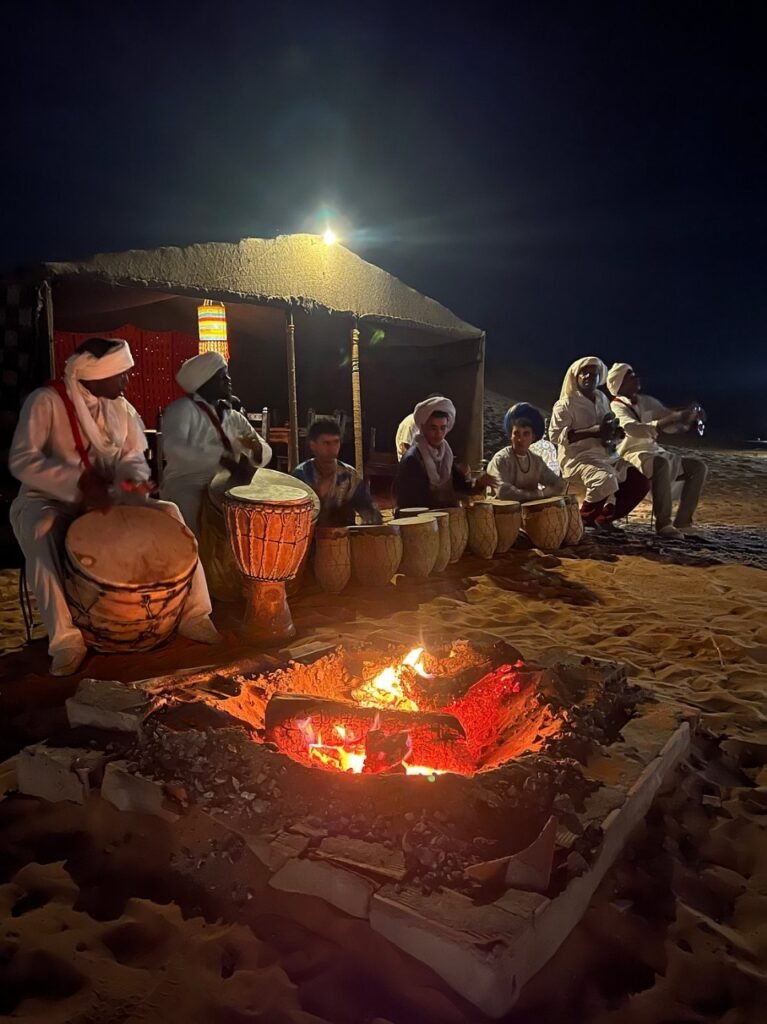


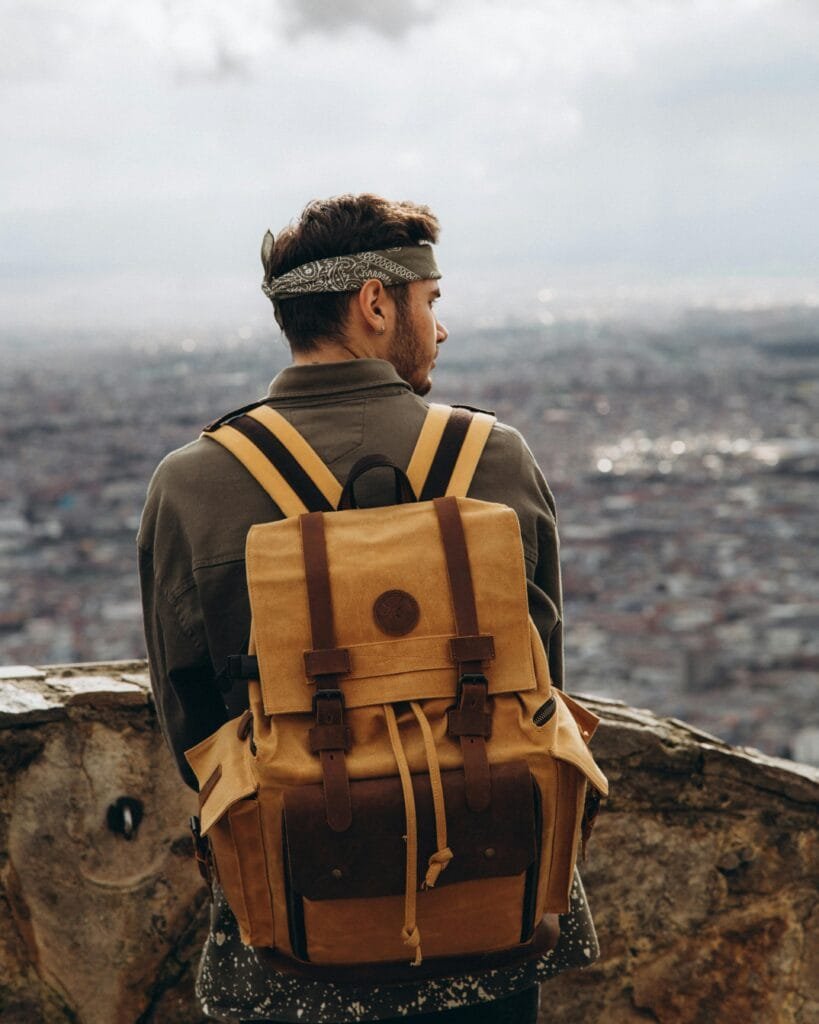
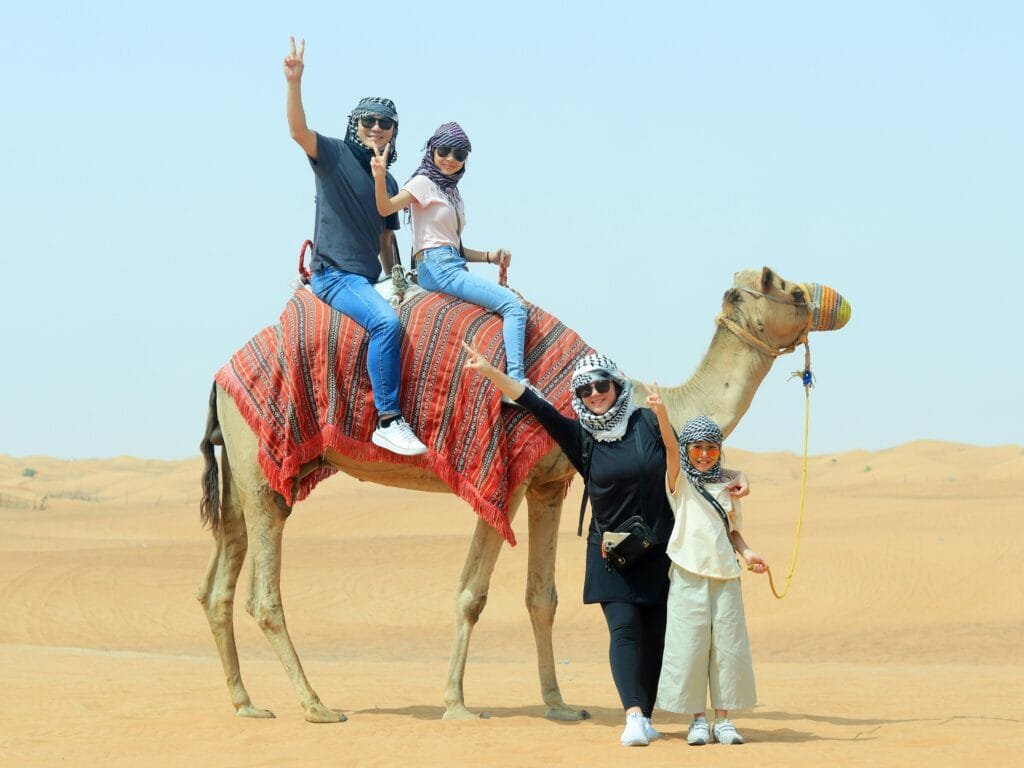
7. Strategic Location and Accessibility
Morocco’s allure is magnified by its prime geographical position, making it incredibly accessible for travelers from around the globe. Nestled at the northwestern tip of Africa, just a stone’s throw from Europe, the Kingdom offers a convenient and seamless travel experience, supported by modern infrastructure and reliable transportation networks.
Close to Europe with Well-Connected International Airports
Morocco’s proximity to Europe is a significant advantage for tourists. Imagine being able to cross from the Iberian Peninsula to the vibrant North African coast in just a short ferry ride across the Strait of Gibraltar! This geographical closeness translates into abundant flight options and a smooth journey.
- Abundant Flight Connectivity: Morocco boasts a network of 19 international airports, with several major hubs providing direct and frequent connections to key European cities. Casablanca’s Mohammed V International Airport (CMN) is the largest and busiest, serving as the main base for Royal Air Maroc and offering numerous flights to destinations across Europe, North America, and beyond.
- European Gateways: Other crucial international airports like Marrakech Menara (RAK), Fes–Saïs (FEZ), Agadir–Al Massira (AGA), and Tangier Ibn Battouta (TNG) are particularly well-connected to Europe. Low-cost carriers like Ryanair, EasyJet, and Transavia operate extensive routes, making travel to Morocco affordable and convenient for European visitors.
- Short Flight Times: The short flight durations from major European cities mean you can quickly transition from your daily routine to the exotic charm of Morocco. This ease of access makes Morocco an ideal destination for short breaks, long weekends, or extended holidays.
- Ferry Connections: For those who prefer a scenic sea journey or wish to bring their vehicles, frequent ferry services operate between Moroccan ports (like Tangier, Nador, and Al Hoceima) and various ports in Spain, France, and Italy.
Reliable Transportation Networks: Exploring Morocco with Ease
Once you arrive in Morocco, you’ll discover a well-developed and increasingly modern transportation infrastructure designed to facilitate your exploration of the country’s diverse regions. Getting around is part of the adventure, with options to suit every budget and travel style.
- Modern Railway System: Morocco’s railway network, operated by ONCF, is one of the most advanced in Africa. The jewel in its crown is “Al Boraq,” Africa’s first high-speed train, connecting Tangier, Kenitra, Rabat, and Casablanca in record time. This efficient and comfortable service is ideal for inter-city travel, offering scenic views and a relaxing journey between major urban centers. Conventional trains also connect a wide range of cities, including Marrakech to Oujda.
- Extensive Bus Networks: For reaching destinations not covered by trains or for a more budget-friendly option, Morocco’s bus network is comprehensive. Major companies like CTM and Supratours offer modern, air-conditioned coaches with reserved seating, connecting nearly every city and town, including coastal areas like Agadir and Essaouira, and desert gateways like Merzouga. Local bus services also provide connectivity to smaller towns and villages.
- Shared Taxis (Grand Taxis): A popular and authentic local mode of transport for inter-city travel, grand taxis are typically large shared sedans that operate on fixed routes. While they depart once all seats are filled, they offer a flexible and relatively quick way to travel between towns and can be a great way to interact with locals.
- City Taxis (Petite Taxis): Within cities, “petite taxis” are readily available for short distances. They are metered, affordable, and easily identifiable by their distinct colors (e.g., red in Casablanca, orange in Marrakech, blue in Rabat).
- Domestic Flights: For covering long distances quickly, particularly between major tourist hubs like Casablanca, Marrakech, Agadir, and Dakhla, Royal Air Maroc offers domestic flights, saving valuable travel time.
- Car Rental: For travelers seeking maximum flexibility and the freedom to explore remote areas at their own pace, car rental services are widely available at airports and in major cities. Morocco boasts a well-maintained road network, including a growing system of highways, making self-driving a viable and enjoyable option.
Morocco’s strategic location and robust transportation infrastructure ensure that your journey to and within the country is as smooth and enjoyable as the experiences that await you. This seamless connectivity makes Morocco an inviting and accessible destination for travelers seeking adventure, culture, relaxation, and genuine human connection.

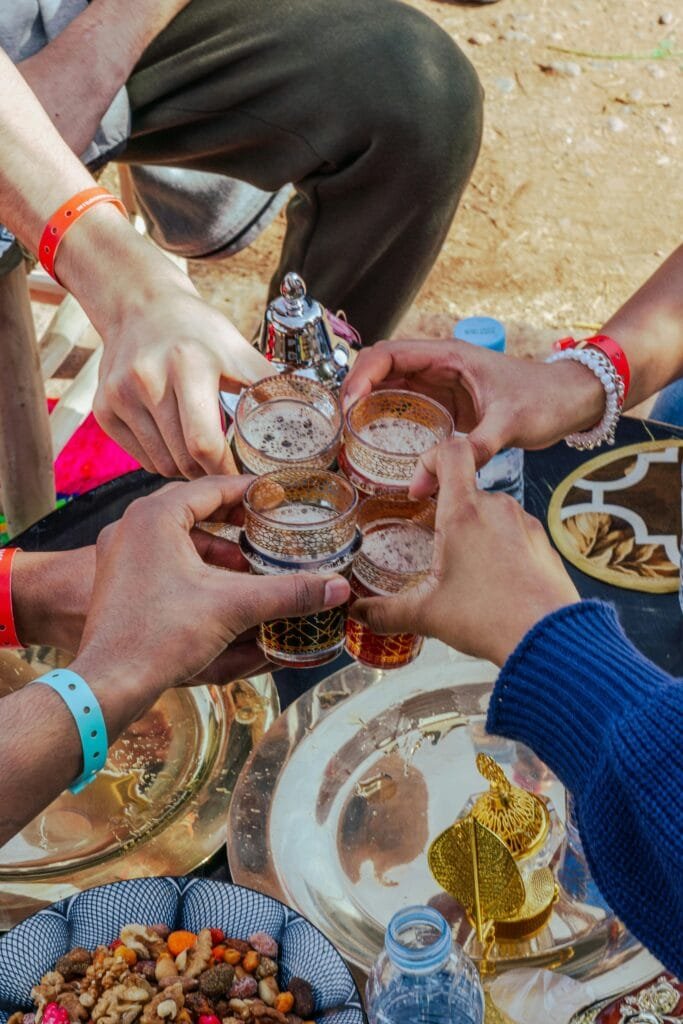
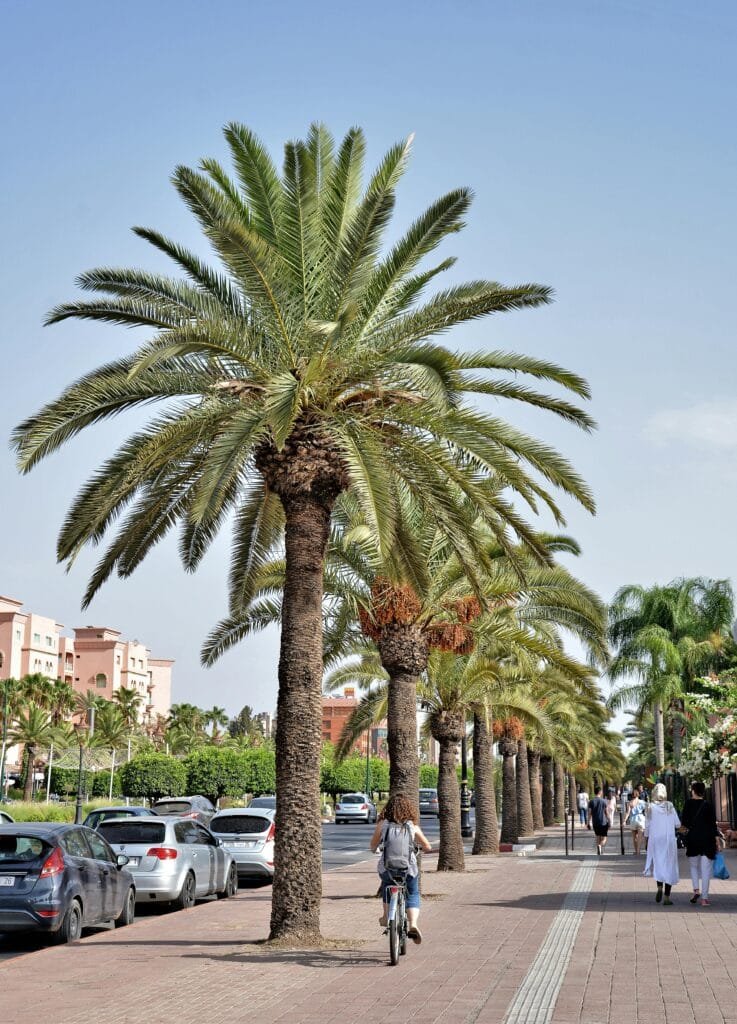

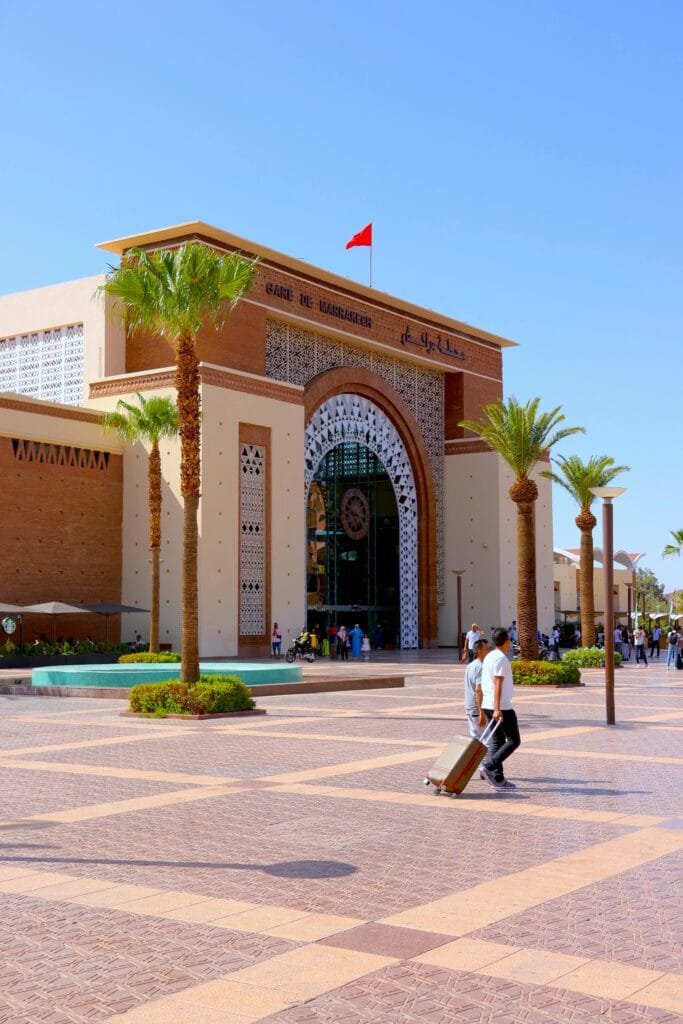
8. Safety and Stability
Morocco stands out as one of the safest and most stable destinations in its region, offering visitors a sense of security and peace of mind. This commitment to safety is a cornerstone of the country’s tourism strategy, allowing guests to fully immerse themselves in the rich cultural experiences and breathtaking landscapes without undue worry.
One of the Safest Destinations in the Region
Morocco has long prioritized the safety and well-being of its citizens and visitors, earning a reputation as a secure travel destination.
- Proactive Security Measures: The Moroccan government maintains a robust and highly effective security apparatus that works diligently to ensure a safe environment. This includes visible police presence in tourist areas, proactive intelligence gathering, and swift responses to any potential threats.
- Political Stability: Unlike some other countries in the region, Morocco has maintained a high degree of political stability under its constitutional monarchy. This consistent governance provides a solid foundation for security and development, fostering a predictable and welcoming atmosphere for international visitors.
- Low Crime Rates: While petty crime, such as pickpocketing or bag snatching, can occur in crowded tourist areas (as in any major city worldwide), violent crime against tourists is rare. By exercising common sense precautions – such as being aware of your surroundings, not displaying excessive wealth, and safeguarding your belongings – you can significantly minimize any risks.
- Tourist-Friendly Environment: Tourism is a vital sector of the Moroccan economy, and there is a strong cultural inclination to protect and welcome visitors. Moroccans generally hold a deep respect for guests, and many individuals involved in the tourism industry are committed to ensuring a positive and safe experience for everyone.
- Cultural Awareness and Respect: While generally safe, travelers should always be mindful of local customs and traditions, particularly as Morocco is a conservative, Islamic country. Dressing modestly, especially when visiting religious sites or rural areas, and being respectful of local norms can enhance your experience and minimize unwanted attention.
Government Support for Sustainable Tourism Development
Beyond ensuring safety, the Moroccan government is deeply invested in the long-term, sustainable growth of its tourism sector. This commitment is evidenced by strategic initiatives aimed at balancing economic prosperity with environmental protection and social equity.
- National Tourism Strategy (2023-2026 Roadmap): Morocco has launched an ambitious new tourism roadmap with significant investment (over $600 million USD) to achieve ambitious targets, including attracting 17.5 million tourists by 2026 and creating 200,000 new jobs. This strategy shifts from a pure destination focus to an “experience-driven” approach, emphasizing quality, diversity, and sustainability.
- Go Siyaha – Green Growth Program: A key pillar of the sustainable tourism initiative is the “Go Siyaha – Green Growth” program. This program provides financial and technical support to tourist accommodation establishments to adopt eco-friendly practices. It funds up to 40% of the cost of equipment for energy efficiency (like solar panels), water optimization, and waste management. It also offers technical assistance for energy audits and sustainability certifications.
- Empowering Local Communities: The government is actively promoting rural tourism development, investing in transforming villages into thriving tourist destinations. This initiative not only diversifies the tourism offerings beyond major cities but also creates long-term employment opportunities and empowers local communities, ensuring that the benefits of tourism are widely distributed.
- International Recognition and Collaboration: Morocco’s commitment to sustainable tourism has garnered international recognition. The UN General Assembly recently adopted a Moroccan-proposed resolution focusing on sustainable tourism as a tool for poverty reduction and environmental conservation. Morocco also collaborates with the UN World Tourism Organization (UNWTO) to strengthen sustainable tourism initiatives, further cementing its leadership in this field.
- Infrastructure for Sustainability: Significant investments are being made in eco-friendly infrastructure projects, such as advanced wastewater treatment plants and large-scale renewable energy projects like the Noor Ouarzazate solar power complex, one of the world’s largest. These initiatives underscore Morocco’s dedication to environmental responsibility.
By choosing Morocco, you are not only selecting a destination renowned for its captivating beauty and warm hospitality but also a country that prioritizes your safety and actively builds a sustainable future for its tourism industry and local communities. Your journey here supports a vision of responsible and enriching travel.
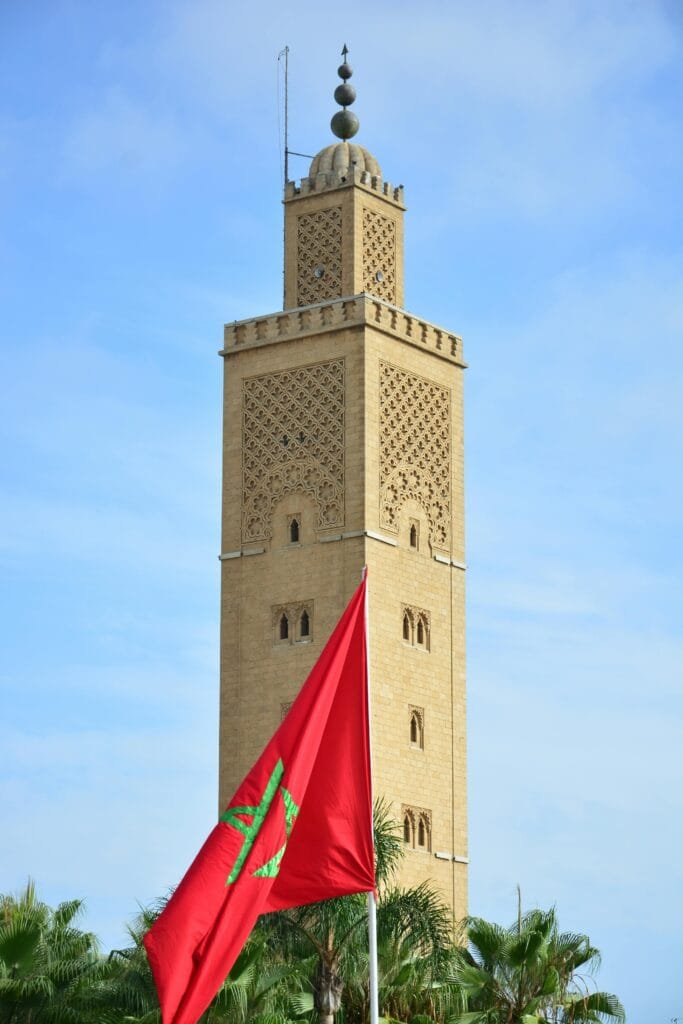
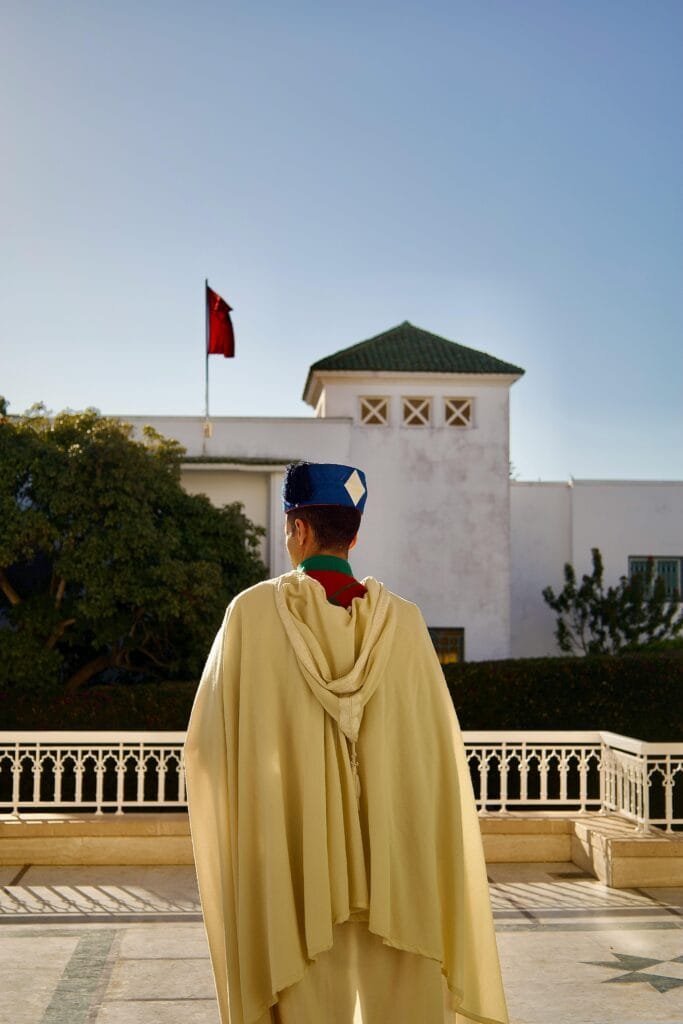
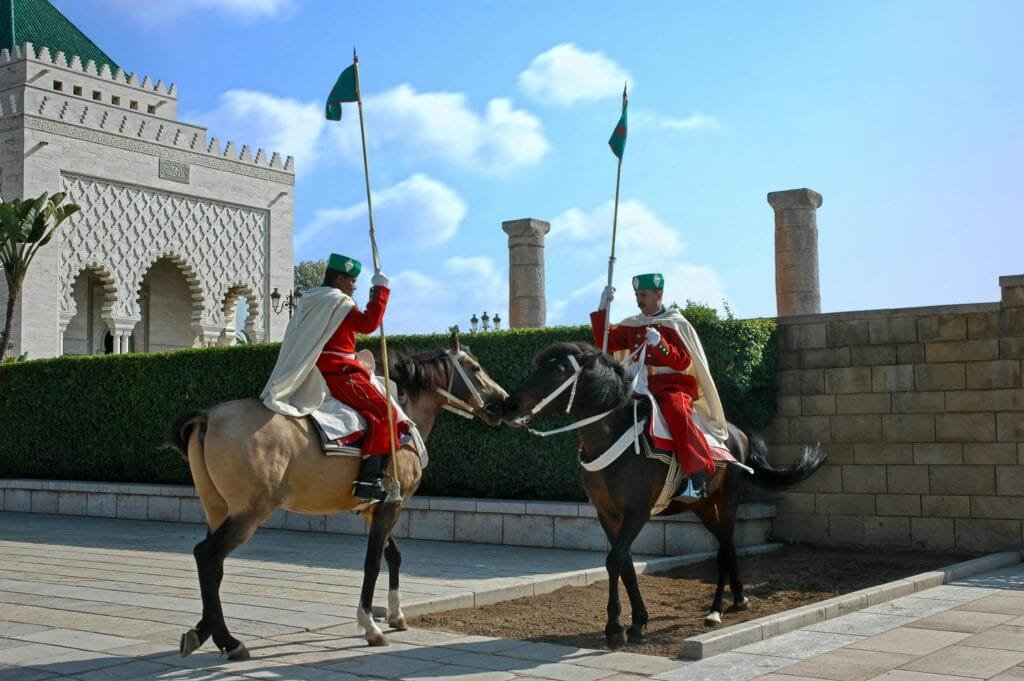
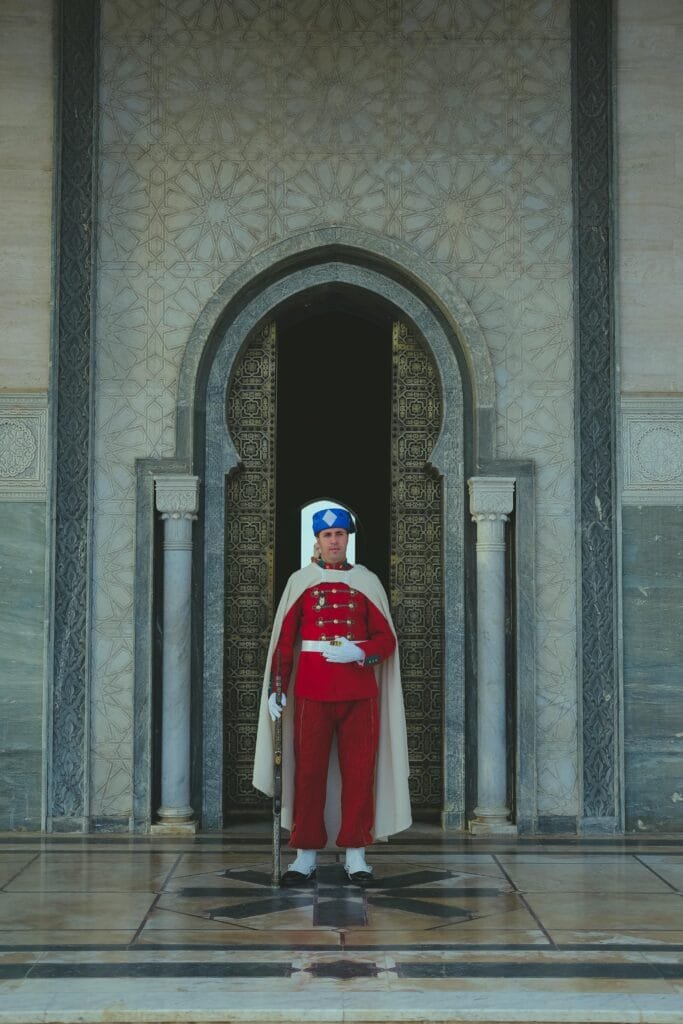

Morocco is a land where ancient history, rich culture, and breathtaking landscapes come together to create an unforgettable travel experience. From the imperial cities like Fez and Marrakech to the Roman ruins and centuries-old Islamic architecture, every step is a journey through time. Whether you’re exploring the majestic Atlas Mountains, the vast Sahara Desert, or the beautiful Atlantic and Mediterranean coasts, Morocco offers something for every kind of traveler.
The country’s vibrant mix of Amazigh, Arab, and European influences, along with its world-famous cuisine — like tagine, couscous, and mint tea — gives visitors a deep, sensory connection to Moroccan life. Add to that the warm hospitality, cultural richness, and ease of access from Europe, and it’s no wonder Morocco is Africa’s number one tourist destination.
🔔 At Casacado Voyageurs, we make your experience even more special by offering:
- Private, personalized tours with expert local guides
- Cultural experiences such as Moroccan cooking classes and artisan workshops
- Reliable transportation, flexible itineraries, and full support throughout your stay
Let us show you the hidden side of Morocco — full of stories, flavors, and unforgettable moments.
Your journey begins with us.

